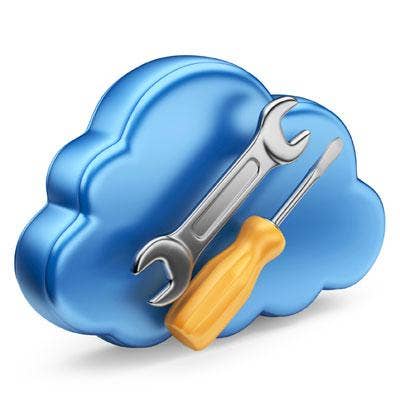9 Strategy Boosters To Build A Cloud-Savvy Business

Opportunities If You Play It Right, Obstacles If You Don't
Pricing, margins, branding issues and strategies for solution-building were just some of the red meat served up to partners attending the Ingram Micro Cloud Summit last week. We've pulled together a round-up of 10 key points that could spell the difference between success and failure as you build your cloud strategy.

1. White Label Your Cloud Offerings
According to strategy consultant Paul Dippell of Service Leadership, channel partners who resell the cloud offerings of other companies will need a white labeling strategy in order to retain acceptable profit margins. Dippell told the gathering that as soon as an end customer learns the identity of the service provider, partners are typically played against one another to secure the lowest price. "No one has ever figured out how to hold high margins on identical stuff that is also sold by someone else," said Dippell. "Be loyal to your vendors, but don't talk about their brands. Their brands don't add to your margin. Their brands reduce your margin."

2. Stick To Public Cloud Unless ...
Dippell also said that solution providers are typically better off with public cloud offerings unless they have three distinct qualities. These include high-end technologists "totally in love with blinking lights"; financial superstars who specialize in raising capital and managing cash flow; and also an extremely rapid sales ramp. Without all three, Dippell says it will be extremely difficult to fund a technology refresh down the road. And if that refresh does not happen, competitors with more efficient, newer technologies will take the advantage.

3. Don't Let Acquisition Costs Get The Better Of You
If you're buying your way into the cloud, the cost of acquisition should be no more than 12 months' worth of margin for that particular company, assuming a contract of at least three years. That's according to MSPexcellence, an Andover, Mass.-based consultancy that specializes in business model transformation. Founders Todd Hussey and Dave Zwicker recommend that partners begin the conversion by assessing their strengths/weaknesses, next developing an objective, and then developing a road map that takes them from Point A to Point B. In addition, ideal customers need to be identified, and portfolios need to be developed, marketed and sold.

4. The Price Must Be Right The First Time
Figuring out the right price points has always been something of an alchemy that bridges art and science, regardless of the vast array of formulas from which to choose. The team at MSPexcellence noted that setting the price too low is not something that is all that easily fixed without "firing the customer." Once expectations are set in place, raising prices to correct misjudgments are rarely well-perceived, and will often cause customers to turn elsewhere.

5. Find Your Inner Innovator
"Channel innovation is a must. If you don't innovate, you probably won't survive -- not because you did anything wrong, but because the market doesn't need you," said Gartner analyst Tiffani Bova, who predicted during a keynote address that the IT world is moving toward a combination of cloud-based computing and traditional IT. "What percentage will be on-prem[ise], and what percentage will be off-prem will depend on specifics of the business [including] market, region, segment and vertical," she said.

6. You're In The Right Place
According to data collected by Ingram Micro, the channel's role in the sale of cloud services appears to be on the upswing. Vice President Renee Bergeron told the Cloud Summit gathering that only 2 percent of cloud business transacted in 2010 involved a channel partner. And in 2013, that number is up to 20 percent. Bergeron predicted that the percentage will continue to grow, driven largely by the complexities of integration, security and support.

7. Understand Your Own Offering
Is it a cloud service or a managed service? Does it even matter? The line between cloud services and managed services is continuing to get blurry, given the fact that both types of solutions are sold the same way. According to Bergeron, the two are becoming increasingly conflated because of several common denominators. These include benefit/value realization, SLAs and monthly recurring revenues. She added one compelling difference between managed services and cloud services. Managed services, she said, are more frequently labor-based, in the sense that the primary function(s) is being monitored or managed by humans. In many cases, managed services and cloud services are bundled together, she added.

8. Get Comfortable With Cross-Selling
Okay, the contract is coming to term, you're thinking about the renewal, and you would like to give the recurring revenue a little extra bump. But increasing the rates on existing services is not likely to gain much traction with the customer, who was probably hoping that the rates for the same service would actually move downward. This often results in a compromise to leave the numbers where they are, unless you can add something new to the mix. "Cross-selling is more critical, or at least more opportunistic when you're dealing with cloud computing," Ingram Micro sales director Jason Bystrak told CRN. "Before you start the renewal process, it's important to take a close look at the customer need and see what additional offers can drive up the numbers."
{C}

9. Don't Forget The Basics
Sales consultant Michael Baer of Franklin Covey posited this checklist for gathering customer information to support solution development.
1. Get a list of issues.
2. Ask if the list is complete.
3. Ask which issue is most important.
4. Gather evidence and ascertain the impact of each issue.
5. Summarize to the customer. Confirm you got it right. Ask if anything was left out.
6. Take each issue in order of priority.
7. Remember that solutions are only as valuable as the problems they solve, or the results they create.